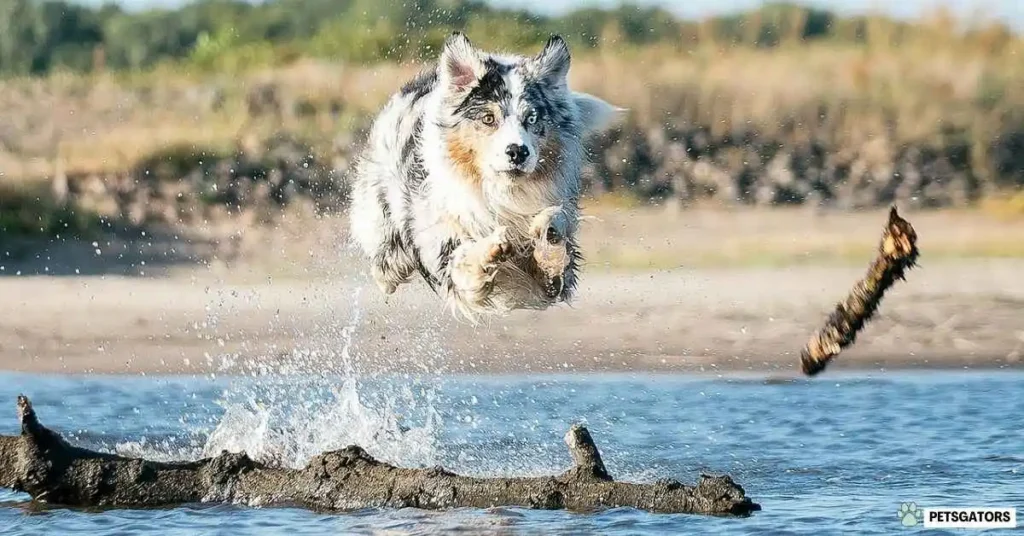Introduction:
As a dog owner, you might have wondered whether it’s safe for your furry friend to take a dip in the pool. While swimming can be an enjoyable activity for dogs, there are certain considerations to keep in mind to ensure their safety and well-being. In this article, we’ll explore everything you need to know about whether dogs can swim in pools, including common concerns, safety measures, and tips for a fun swimming experience for your canine companion.
Table of Contents
Can Dogs Swim in Pools?
Many dogs can indeed swim in pools, and swimming can be an excellent form of exercise and recreation for them. However, it’s essential to take certain precautions to ensure their safety and health while swimming.
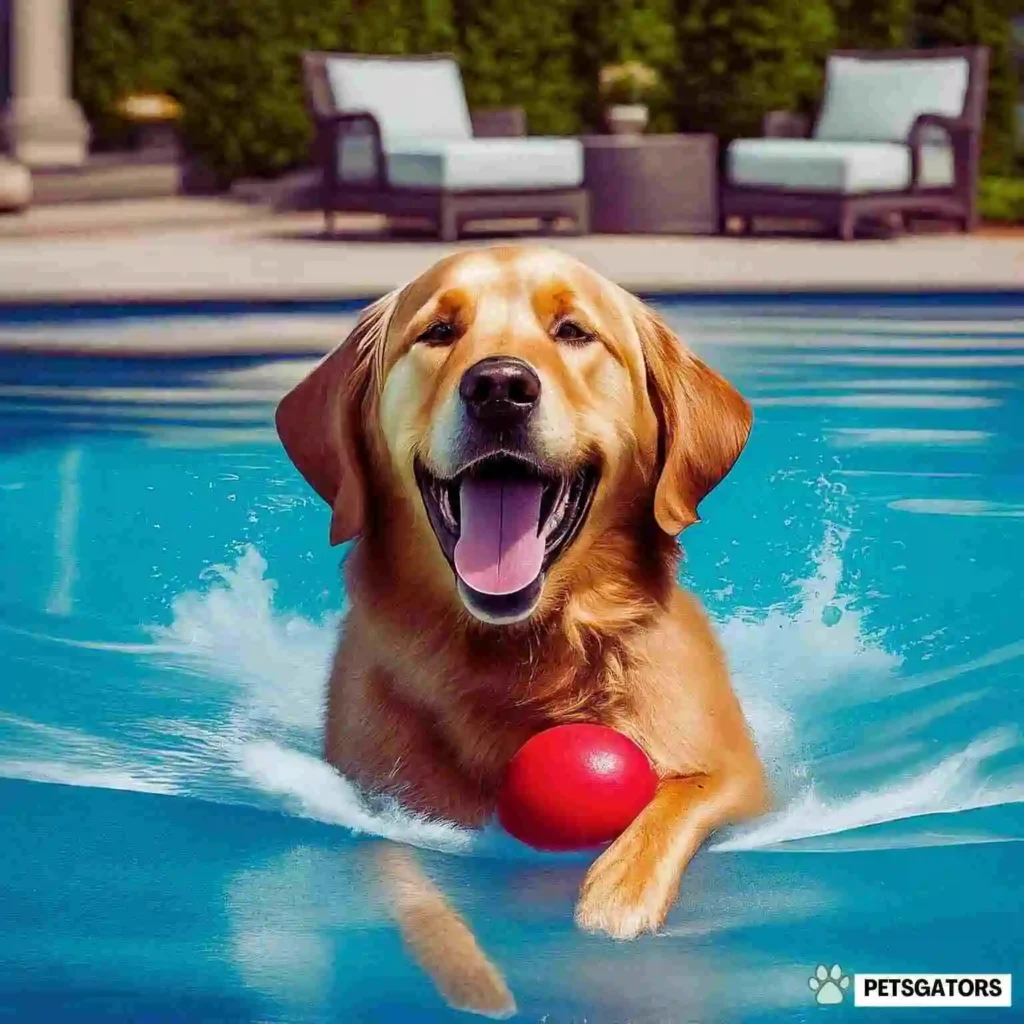
Can Dogs Swim in Pools
Is it OK if My Dog Swims in the Pool?
Yes, it’s generally safe for dogs to swim in pools, but there are a few factors to consider:
- Supervision: Always supervise your dog while they’re swimming to prevent accidents or exhaustion.
- Swimming Ability: Not all dogs are natural swimmers, so it’s crucial to gauge your dog’s comfort and ability in the water before allowing them to swim freely.
- Pool Safety: Ensure that your pool is securely fenced to prevent accidental falls or access when unsupervised.
Is Chlorine Water Bad for Dogs?
Chlorine is commonly used to disinfect pool water, but it can be harmful to dogs if ingested in large amounts. Here’s what you need to know:
- Chlorine Exposure: Dogs may experience skin irritation or gastrointestinal upset if exposed to high levels of chlorine in pool water.
- Rinse After Swimming: It’s a good idea to rinse your dog with fresh water after swimming to remove any chlorine residue from their fur.
Is it advisable to give my dog a bath after they’ve been swimming in the pool?
Yes, it’s recommended to give your dog a bath after swimming in a pool to remove chlorine, bacteria, and other contaminants from their fur. Use a mild dog shampoo and thoroughly rinse their coat to ensure their skin and coat stay healthy.
Is Chlorine Bad for Dogs’ Eyes?
Chlorine can cause irritation to dogs’ eyes if they come into contact with chlorinated pool water. Signs of eye irritation may include redness, excessive tearing, or discomfort. If your dog displays any signs of eye irritation after swimming, rinse their eyes gently with fresh water and consult your veterinarian if symptoms persist.
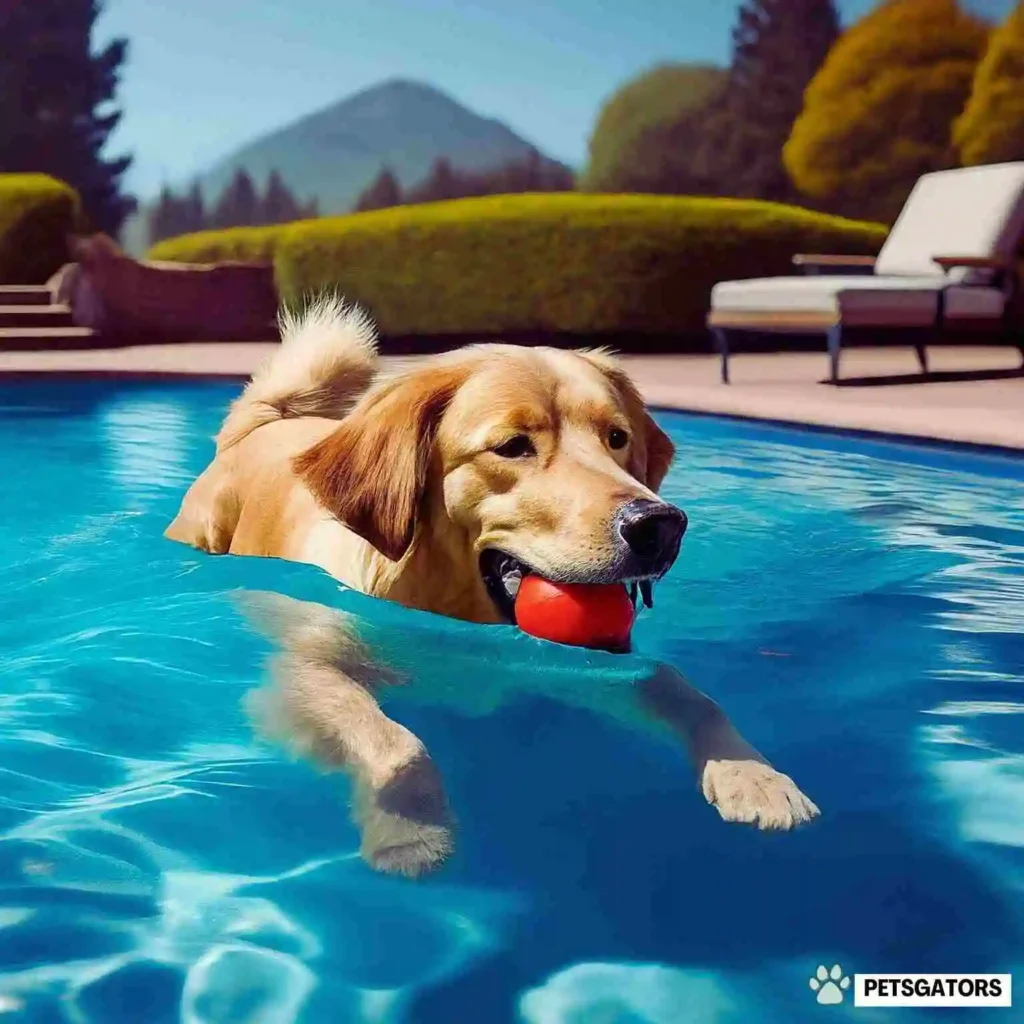
Can Dogs Swim in Pools
Could Swimming Daily Harm a Dog’s Health?
Swimming can be an excellent form of exercise for dogs, but it’s essential to monitor their activity levels and ensure they don’t overexert themselves. Swimming every day may not be suitable for all dogs, especially those with certain health conditions or joint issues. Consult with your veterinarian to determine the appropriate frequency and duration of swimming sessions for your dog.
Why Do Dogs Drink Pool Water?
Dogs may drink pool water out of curiosity or thirst, but it’s essential to discourage this behavior to prevent potential health issues. Pool water may contain chemicals such as chlorine or other contaminants that can be harmful if ingested in large amounts. Always provide your dog with access to fresh, clean water to prevent them from drinking pool water.
What Kind of Pool Water Is Best for Dogs?
Ideally, the best pool water for dogs is clean, well-maintained water with appropriate chlorine levels. Here are some tips for maintaining a dog-friendly pool:
- Regular Maintenance: Keep your pool clean and well-maintained by regularly skimming debris, monitoring chlorine levels, and maintaining proper filtration.
- Use Pool Covers: Cover your pool when it’s not in use to prevent debris accumulation and minimize the risk of accidents or contamination.
- Consider Alternative Pool Treatments: Explore alternative pool treatments that are safe for dogs, such as saltwater systems or natural enzyme-based cleaners.
How Do You Treat a Dog in a Pool?
When swimming with your dog in a pool, it’s essential to prioritize their safety and well-being. Here are some tips for treating your dog in a pool:
- Start Slow: Introduce your dog to the pool gradually and allow them to become comfortable with the water at their own pace.
- Use Buoyancy Aids: Consider using a doggy life jacket or buoyancy aid to provide extra support and safety for your dog, especially if they’re new to swimming.
- Watch for Signs of Fatigue: Pay attention to your dog’s energy levels and watch for signs of fatigue or distress. Take frequent breaks and encourage them to rest as needed.
How Do I Disinfect My Dog’s Pool?
Keeping your dog’s pool clean and sanitary is essential for their health and safety. Here are some tips for disinfecting your dog’s pool:
- Use Pet-Safe Cleaners: Avoid using harsh chemicals or cleaners that may be harmful to your dog. Opt for pet-safe cleaners or natural disinfectants to clean your dog’s pool effectively.
- Regular Maintenance: Clean your dog’s pool regularly by emptying and scrubbing it with mild soap and water. Rinse thoroughly to remove any residue before refilling with fresh water.
- Monitor Water Quality: Keep an eye on the water quality in your dog’s pool and test regularly for pH and chlorine levels. Adjust as needed to maintain optimal water quality for your dog.
Do Dogs Need a Bath After Chlorine?
Yes, it’s a good idea to give your dog a bath after swimming in chlorinated pool water to remove any chlorine residue from their fur and skin. Use a gentle dog shampoo and thoroughly rinse their coat to ensure their skin and coat stay healthy.
Does Chlorine Burn Dogs?
Chlorine can cause skin irritation or chemical burns in dogs if they’re exposed to high levels of chlorinated pool water. Signs of chlorine burn may include redness, itching, or discomfort. If your dog experiences any symptoms of chlorine burn after swimming, rinse their skin thoroughly with fresh water and consult your veterinarian if symptoms persist.
Can Dogs Drink Pool Saltwater?
No, dogs should not drink pool saltwater as it can be harmful to their health. Saltwater pools contain high levels of salt, which can cause dehydration, electrolyte imbalances, and other health issues if ingested by dogs. Always provide your dog with access to fresh, clean water to prevent them from drinking pool water.
Do Dogs Enjoy Swimming?
Many dogs enjoy swimming and find it to be a fun and rewarding activity. Swimming can provide dogs with exercise, mental stimulation, and relief from hot weather. However, not all dogs are natural swimmers, so it’s essential to gauge your dog’s comfort and ability in the water before encouraging them to swim.
Why Can’t Dogs Swim?
While many dogs can swim naturally, some breeds may struggle in the water due to their anatomy or physical characteristics. Brachycephalic breeds, such as Bulldogs or Pugs, may have difficulty swimming due to their short noses and heavy bodies. Additionally, dogs with certain medical conditions or injuries may also have trouble swimming.
What Pool Chemicals Are Safe for Dogs?
When it comes to pool chemicals, it’s essential to use products that are safe for dogs and won’t cause harm if ingested or exposed to their skin. Here are some dog-friendly pool chemicals to consider:
- Chlorine: Use chlorine in moderation and maintain proper levels to ensure the safety of your dog while swimming.
- Saltwater Systems: Consider using a saltwater system as an alternative to traditional chlorine pools, as they may be gentler on your dog’s skin and coat.
- Natural Enzyme-Based Cleaners: Explore natural enzyme-based cleaners or pool treatments that are safe for dogs and won’t pose a risk to their health.
What Are the Benefits of Swimming in Pools?
Swimming offers numerous benefits for dogs, including:
- Exercise: Swimming provides dogs with a full-body workout that can help improve cardiovascular health, muscle tone, and overall fitness.
- Mental Stimulation: Swimming can be mentally stimulating for dogs, providing them with a fun and engaging activity to enjoy.
- Joint Health: Swimming is low-impact and easy on the joints, making it an excellent form of exercise for dogs with arthritis or joint pain.
- Cooling Off: Swimming provides dogs with a refreshing way to cool off during hot weather, helping them stay comfortable and hydrated.
When Is the Best Time to Swim in Pools?
The best time for dogs to swim in pools is during the warmer months when temperatures are mild and the water is comfortable. Avoid swimming in extremely hot or cold weather, as it can be uncomfortable or even dangerous for your dog. Additionally, consider swimming during off-peak hours to avoid crowded or busy pool environments.
Where Can Dogs Find the Best Pools?
Dogs can find the best pools at pet-friendly facilities, dog parks, or private residences with dog-friendly pool setups. Look for pools with shallow areas, easy access ramps or steps, and secure fencing to ensure your dog’s safety and enjoyment while swimming.
Can Dogs Safely Enjoy a Dip in Pools?
Swimming can be safe for dogs when proper precautions are taken to ensure their safety and well-being. Here are some tips for safely swimming with your dog in pools:
- Supervise: Always supervise your dog while they’re swimming to prevent accidents or injuries.
- Monitor Water Quality: Keep an eye on the water quality in the pool and test regularly for pH and chlorine levels.
- Provide Support: Use buoyancy aids or life jackets to provide extra support and safety for your dog, especially if they’re new to swimming.
- Watch for Signs of Fatigue: Pay attention to your dog’s energy levels and watch for signs of fatigue or distress. Take frequent breaks and encourage them to rest as needed.
- Rinse After Swimming: Rinse your dog with fresh water after swimming to remove chlorine, bacteria, and other contaminants from their fur and skin.
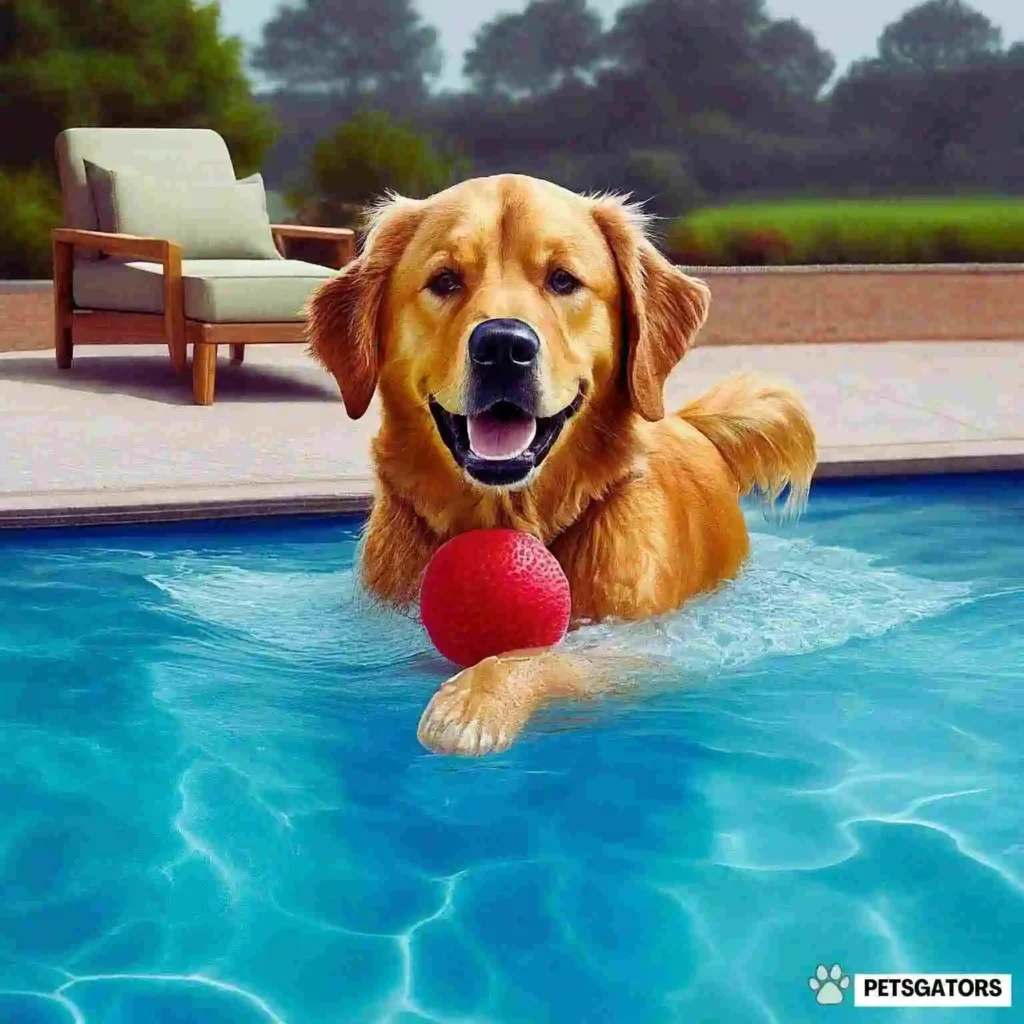
Can Dogs Swim in Pools
How Can Dogs Enjoy Swimming in Pools?
Dogs can enjoy swimming in pools by:
- Providing Positive Reinforcement: Use treats, praise, and encouragement to make swimming a positive and enjoyable experience for your dog.
- Introducing Gradually: Introduce your dog to the water gradually and allow them to become comfortable at their own pace.
- Choosing the Right Environment: Select a safe and dog-friendly pool environment with shallow areas, easy access, and secure fencing.
- Monitoring Comfort: Watch for signs of stress or discomfort in your dog and adjust accordingly to ensure their comfort and enjoyment while swimming.
How to Safely Swim in Pools
To safely swim with your dog in pools:
- Supervise: Always supervise your dog while they’re swimming to prevent accidents or injuries.
- Provide Support: Use buoyancy aids or life jackets to provide extra support and safety for your dog, especially if they’re new to swimming.
- Monitor Water Quality: Keep an eye on the water quality in the pool and test regularly for pH and chlorine levels.
- Rinse After Swimming: Rinse your dog with fresh water after swimming to remove chlorine, bacteria, and other contaminants from their fur and skin.
10 Tips for Safely Swimming in Pools
Here are ten tips for safely swimming with your dog in pools:
- Start Slow: Introduce your dog to the water gradually and allow them to become comfortable at their own pace.
- Use Buoyancy Aids: Consider using a doggy life jacket or buoyancy aid to provide extra support and safety for your dog, especially if they’re new to swimming.
- Watch for Signs of Fatigue: Pay attention to your dog’s energy levels and watch for signs of fatigue or distress. Take frequent breaks and encourage them to rest as needed.
- Provide Positive Reinforcement: Use treats, praise, and encouragement to make swimming a positive and enjoyable experience for your dog.
- Choose the Right Environment: Select a safe and dog-friendly pool environment with shallow areas, easy access, and secure fencing.
- Monitor Water Quality: Keep an eye on the water quality in the pool and test regularly for pH and chlorine levels.
- Rinse After Swimming: Rinse your dog with fresh water after swimming to remove chlorine, bacteria, and other contaminants from their fur and skin.
- Stay Hydrated: Provide your dog with access to fresh, clean water before, during, and after swimming to prevent dehydration.
- Know Your Dog’s Limits: Be mindful of your dog’s physical condition and swimming abilities, and avoid pushing them beyond their limits.
- Have Fun: Swimming should be an enjoyable experience for both you and your dog, so relax, have fun, and make lasting memories together.
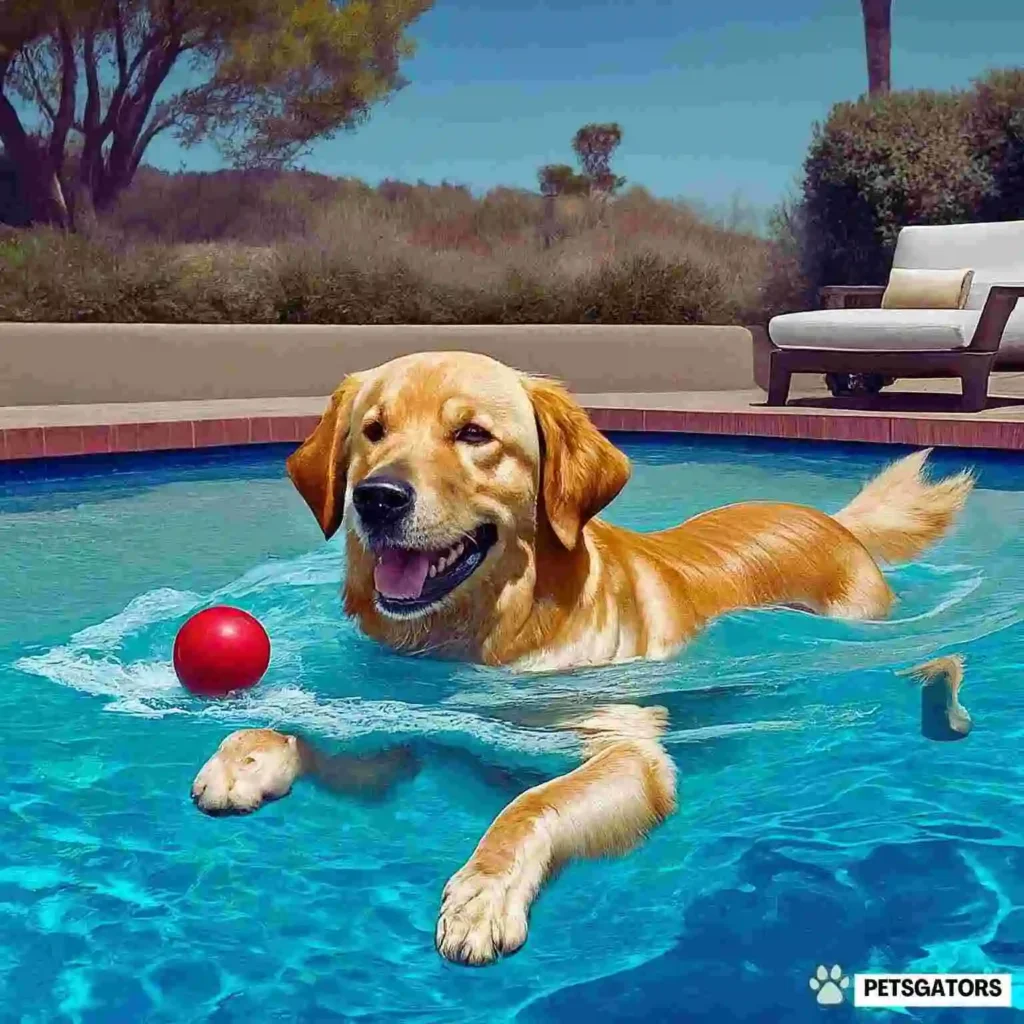
Can Dogs Swim in Pools
Exploring the Wonders of Swimming in Pools
Swimming can be a fun and rewarding activity for dogs, providing them with exercise, mental stimulation, and relief from hot weather. By adhering to the advice and suggestions provided in this article, you can guarantee a secure and pleasurable swimming venture for your beloved four-legged friend. So grab your doggy life jacket, dive in, and make a splash together in the wonderful world of swimming pools!
FAQs
Is it OK if my dog swims in the pool?
Yes, it’s generally safe for dogs to swim in pools, but it’s essential to supervise them and ensure the pool is properly maintained.
Is chlorine water bad for dogs?
Chlorine can be harmful to dogs if ingested in large amounts, so it’s important to rinse your dog after swimming to remove any chlorine residue from their fur.
Should I wash my dog after swimming in the pool?
Yes, it’s a good idea to give your dog a bath after swimming to remove chlorine, bacteria, and other contaminants from their fur and skin.
Is it bad for a dog to swim every day?
Swimming every day may not be suitable for all dogs, so it’s important to monitor their activity levels and ensure they don’t overexert themselves.
Do dogs enjoy swimming?
Many dogs enjoy swimming and find it to be a fun and rewarding activity, but it’s essential to gauge your dog’s comfort and ability in the water before encouraging them to swim.
Conclusion:
In conclusion, swimming can be a safe and enjoyable activity for dogs, providing them with exercise, mental stimulation, and relief from hot weather. By adhering to the advice and recommendations provided in this article, you can guarantee an enjoyable and fulfilling aquatic adventure for your furry friend. So grab your dog’s favorite toy, head to the pool, and make a splash together!
Must Read: Why Are Swimming Dogs So Popular?
5 Amazing Tips To Safely Enjoy Dogs In Swimming Pools: An Essential Guide
5 Easy Steps To Master Dog Paddling Swimming: Ultimate Guide

